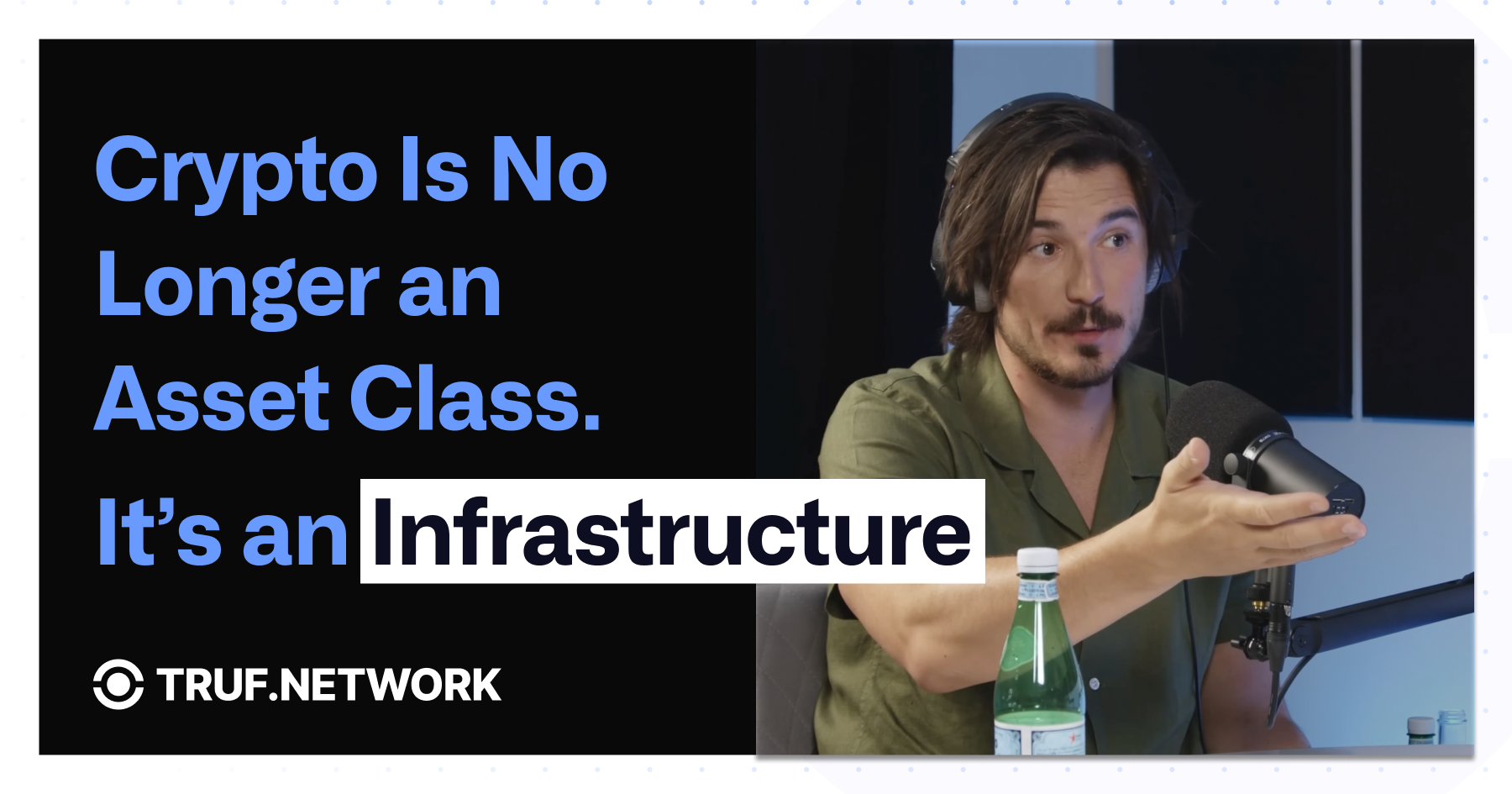Crypto Is No Longer an Asset Class, It’s Infrastructure
Why Robinhood’s @Vlad Tenev is right that blockchain is “the layer behind everything” – and why the future of prediction markets depends on it

“Crypto is going to be this layer that is behind everything. Everything is going to be powered by crypto to some degree.” – Vlad Tenev, Robinhood CEO
When the CEO of one of the world’s most mainstream fintechs says this, it’s worth listening.
Tenev isn’t talking about crypto as a speculative asset or a retail investing fad. He’s describing what’s already happening beneath the surface: crypto quietly evolving into digital infrastructure.
This isn’t theoretical. Three converging forces are accelerating the shift:
- Technical maturity: networks and protocols scaling to enterprise-grade performance
- Institutional adoption: capital flowing into foundational layers, not just consumer apps
- Regulatory clarity: frameworks and approvals that let enterprises build with confidence
The stakes? A projected $1.3 trillion blockchain infrastructure market by 2030.
This is not a question of if. It’s about how fast.
The Technical Evidence - Infrastructure-Grade Performance
Tenev’s prediction isn’t abstract. Today’s blockchain performance proves the shift is underway.
Ethereum Layer 2 solutions now process hundreds of transactions per second at negligible cost. Solana pushes past 1,000 TPS. Uptime metrics rival traditional cloud providers.
Infrastructure providers like Alchemy and Infura handle billions of API calls daily, empowering developers to build fintech products, AI agents, and real-time marketplaces.
And the enterprise use cases keep coming:
- JPMorgan: cross-border payments on blockchain rails
- Walmart: blockchain supply chain integration cutting costs and increasing transparency
- Circle’s USDC: $30B+ in circulation as a de facto backbone of fintech
This isn’t just crypto “working.” This is crypto doing critical work.
The Investment Evidence - Capital Follows Infrastructure
Smart money is following the trend.
In 2024, blockchain infrastructure projects drew more VC funding than consumer-facing crypto apps for the first time. Institutional investors are deploying capital into ETFs and tokenization pilots.
Regulators, too, are leaning in:
- Europe’s MiCA framework gives enterprises a green light to engage
- U.S. ETF approvals are pulling crypto into mainstream portfolios
- Asia is leading tokenized asset rollouts at a national scale
Infrastructure is where the real economic gravity now sits.
The Fragility Problem, and Why It Matters
But as crypto matures into infrastructure, cracks in certain application layers are becoming visible, especially in systems like prediction markets.
These markets, in theory, offer transparent price discovery and automated settlements on the blockchain. But in practice, they often lean on fragile data inputs:
- Centralized feeds vulnerable to manipulation
- Single-source oracles that can fail
- Settlement systems requiring human intervention
Until there’s a robust, multi-source, verified data layer feeding these systems, they’ll remain experimental rather than critical infrastructure.
Building Towards the Future – A Source of Truth Layer
This is where the next phase of blockchain infrastructure comes in: a Source of Truth layer that ingests, verifies, and delivers real-time data to applications like prediction markets, stablecoins, and autonomous AI agents.
At TRUF.NETWORK, this is what we’re building. Not another oracle, but a decentralized network for verified, multi-source, real-time data that can scale globally. A real Source of Truth.
We’re already seeing the need:
- Nuon.fi uses our data feeds to stabilize the world’s first flatcoin
- Index.fun creates dynamic on-chain indexes
- Truflation delivers live economic data to power DeFi apps
But we’re still early. And we know getting this right requires input from the developers, investors, and enterprises who will build on top of it.
Why Vlad’s Vision Is Already Materializing
Tenev’s prediction markets example underscores why this matters. These systems depend on transparent, reliable data to resolve markets and maintain trust. Without a resilient infrastructure layer, they risk remaining niche.
But with the right foundation, prediction markets could evolve into global information networks, providing insights, price signals, and real-time consensus far beyond finance.
This is the kind of future blockchain infrastructure is enabling. And it’s happening faster than most realize.
The Infrastructure Inflection Point
Crypto’s identity has shifted. It’s no longer about asset speculation, it’s about programmable infrastructure powering the next wave of innovation.
Developers: this is your chance to build applications on foundations designed for resilience and scale. Investors: infrastructure is where the long-term value will accrue. Enterprises: blockchain is now ready to handle mission-critical systems.
But there’s still work to do. And we want your input to help shape this next layer.
